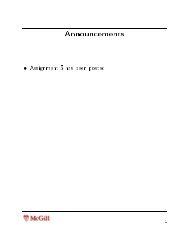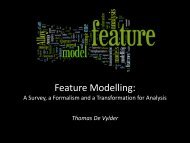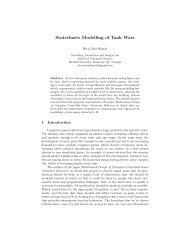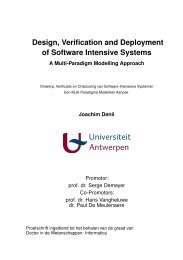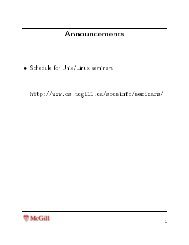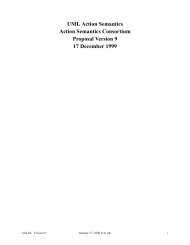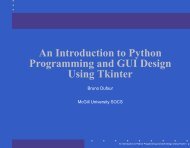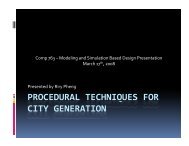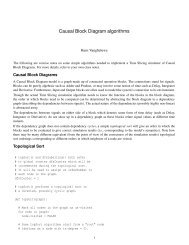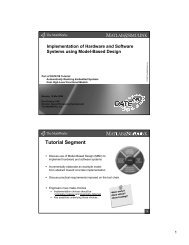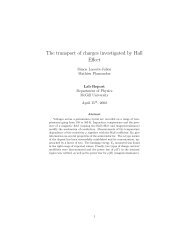A Comprehensive Introduction to Python Programming and ... - MSDL
A Comprehensive Introduction to Python Programming and ... - MSDL
A Comprehensive Introduction to Python Programming and ... - MSDL
You also want an ePaper? Increase the reach of your titles
YUMPU automatically turns print PDFs into web optimized ePapers that Google loves.
1.2 Language Features 5 / 75<br />
Notes:<br />
Sequence Description<br />
\newline Ignored<br />
\\ \<br />
\’ Single quote<br />
\" Double quote<br />
\a ASCII Bell Character (BEL)<br />
\b ASCII Backspace Character (BS)<br />
\f ASCII Form Feed Character (FF)<br />
\n ASCII Line Feed Character (LF)<br />
\Nname Unicode character named ’name’ (Unicode only)<br />
\r ASCII Carriage Return Character (CR)<br />
\t ASCII Horizontal Tab Character (TAB)<br />
\uhhhh Character with the 16-bit Hexadecimal value hhhh<br />
(Unicode Only)<br />
\Uhhhhhhhh Character with the 32-bit Hexadecimal value<br />
hhhhhhhh (Unicode Only)<br />
\v ASCII Vertical Tab Character (VT)<br />
\ooo ASCII Character with the octal value ooo<br />
\hh ASCII Character with the hexadecimal value hh<br />
1. Two string adjacent string literals will be concatenated at compile time. For<br />
example, "Hello"" world!" will be concatenated in<strong>to</strong> "Hello world!". This<br />
allows <strong>to</strong> easily break string literals across multiple lines. Comments are allowed<br />
between the parts of the string. Also, different quotation marks can be used for<br />
each part. The different parts of the string must be enclosed in parantheses if the<br />
string is <strong>to</strong> span multiple lines, if it is not already the case (eg for function calls).<br />
2. String literals can also be enclosed within three double quotes, in which case<br />
newlines within the string are become part of it.<br />
1.2.1.4 Imaginary Numbers<br />
<strong>Python</strong> provides built-in support for imaginary numbers. It defines 1j <strong>to</strong> be equal<br />
<strong>to</strong> √ −1. Imaginary numbers can be written in the form a + bj, where a <strong>and</strong> b are<br />
integers or floats.<br />
1.2.2 Variables<br />
Variables are not declared in <strong>Python</strong>. Since <strong>Python</strong> is a dnamically typed language,<br />
any variable can be assigned any value, regardless of its previous type. This also holds<br />
for instance variables in classes. Therefore, it is a good idea <strong>to</strong> initialize all instance<br />
variables in the construc<strong>to</strong>r <strong>to</strong> make sure that memory has been allocated for them, <strong>and</strong><br />
in order <strong>to</strong> make sure that they can safely be used inside the class. <strong>Python</strong> used <strong>to</strong> rely<br />
on a reference counting algorithm <strong>to</strong> free the unused variables. The newer versions of<br />
<strong>Python</strong> (ie 2.0 beta <strong>and</strong> above) rely on a more traditional garbage collection technique.



